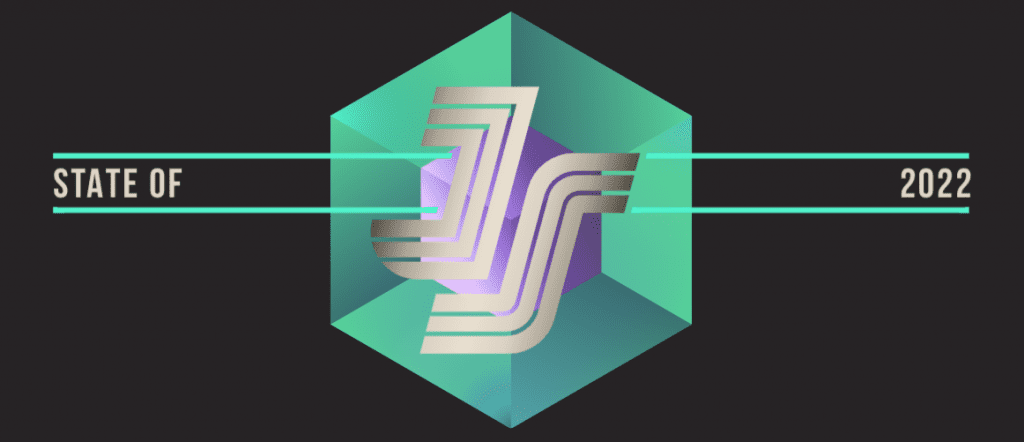StateOfJS recently released the 2022 State of JavaScript Survey Report stating that,Emerging front-end frameworks like Solid and Qwik are challenging React authority.The report is based on theSurvey of nearly 40,000 web developers, nearly double the number from last year.
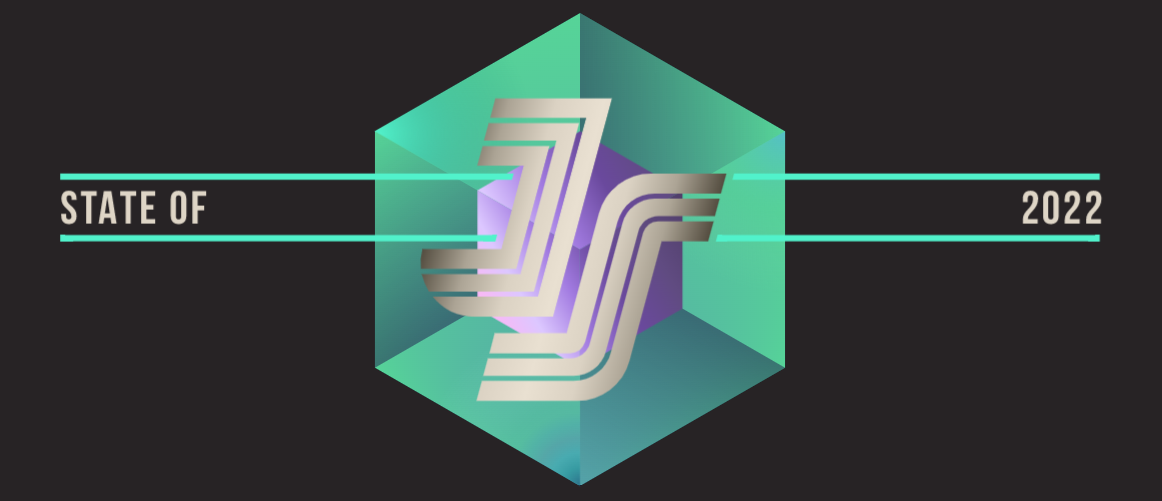
JavaScript may be moving fast, but JavaScript developers appear to be moving even faster, as many relatively new features have shown high rates of adoption.report The features of JavaScript are divided into three parts: language, browser API and other features.The graph below shows the adoption rate of various features, broken down by category;Outer ringThe size of represents the number of users who know about this feature,Inner circleThe size of represents the number of users who actually use this feature.
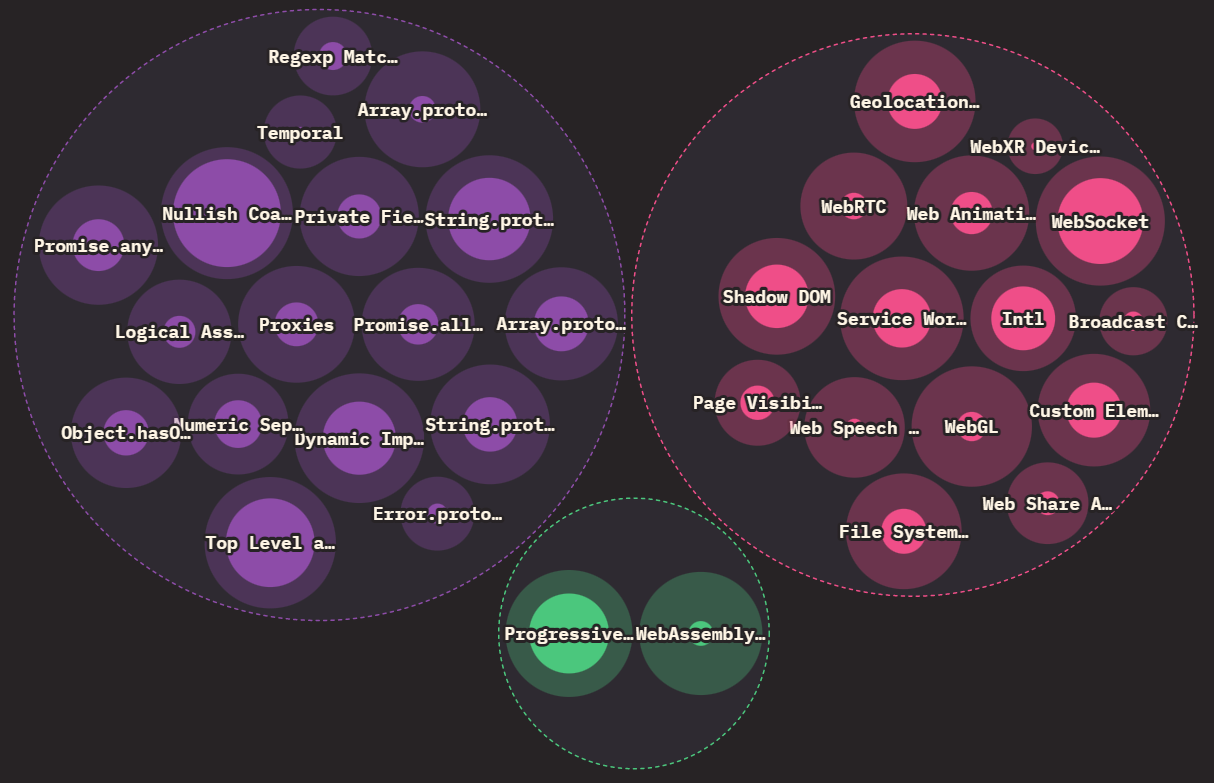
Among them, Nullish Coalescing has the highest usage rate, reaching 81.7%. Followed by Top Level await() (67.5%),String.prototype.replaceAll()(64.6%)、Progressive Web app(64.4%).
The JavaScript 2022 survey shows the development of JavaScript technologies over the past few years in a quadrant chart. Each line is used from 2016 to 2022. A higher score means more people have used the technology; while a score on the right means more users want to learn it, or have used it and will use it again.

1. The status quo of JavaScript – front-end framework
React remains the most widely used front-end framework with a usage rate of 81.8%, ahead of second place Angular at 48.8% and third place Vue 46.2%;Svelte usage grew to 21% from 7.8% in 2019.The framework that developers are most interested in is Svelte (69.8%). Among rendering frameworks, Next.js is number one (48.6%), ahead of Gatsby at 23%, but “interest” puts Next.js roughly on par with SvelteKit and Astro.
Svelte and Solid lead the way in terms of retention with 89% and 90% respectively. React’s retention rate dropped from 89% in 2019 to 83%, while Angular’s retention rate increased slightly during this period to 42%, but this is still far below 2016’s 68%.
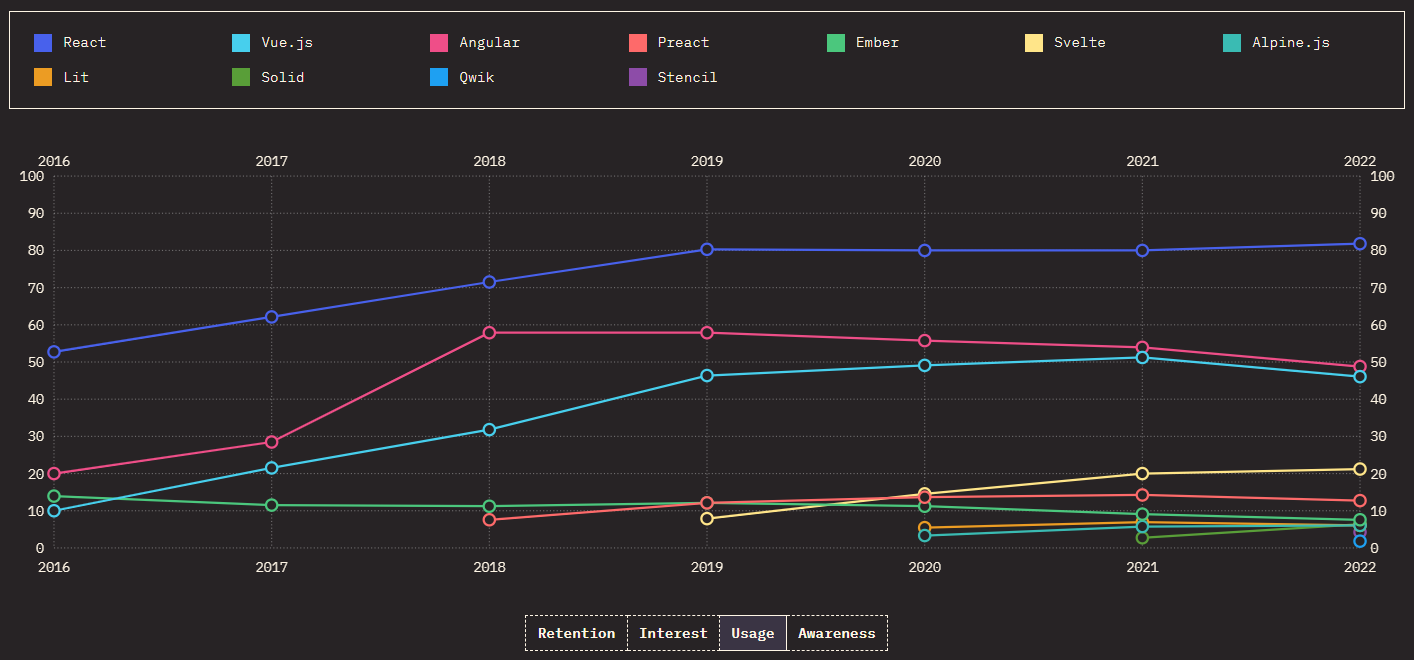
2. The status quo of JavaScript – back-end framework (server-side)
On the server side, the top-ranked rendering framework is Next.js, accounting for 48%, followed by Gatsby at 23%, and Next at 18%. However, Astro and SvelteKit topped the list with 92% retention each, followed by Next.js at 90%. Gatsby’s retention rate dropped from 90% in 2019 to 38% in 2022.
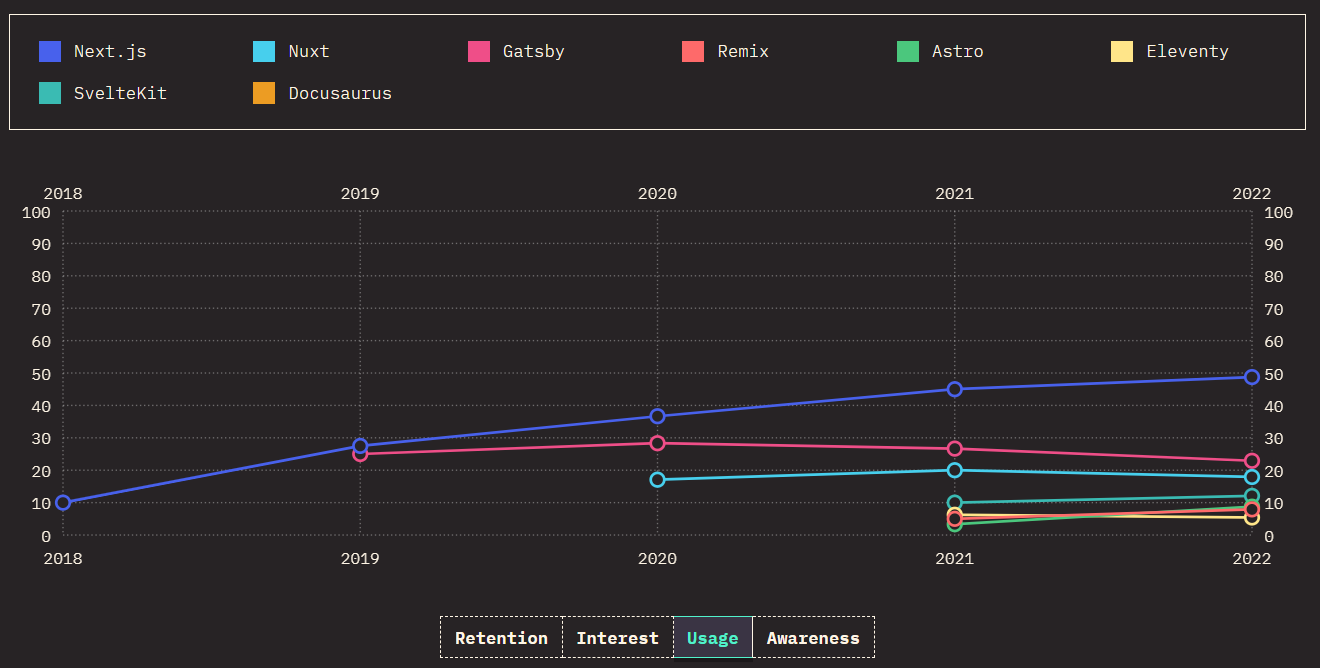
3. JavaScript status – testing
Jest continues to top the list of the most commonly used unit testing frameworks with a usage rate of 68.3%;but Vitest and Testing Library And other emerging tools are not to be outdone, and the retention rate ranks first and second in the list.
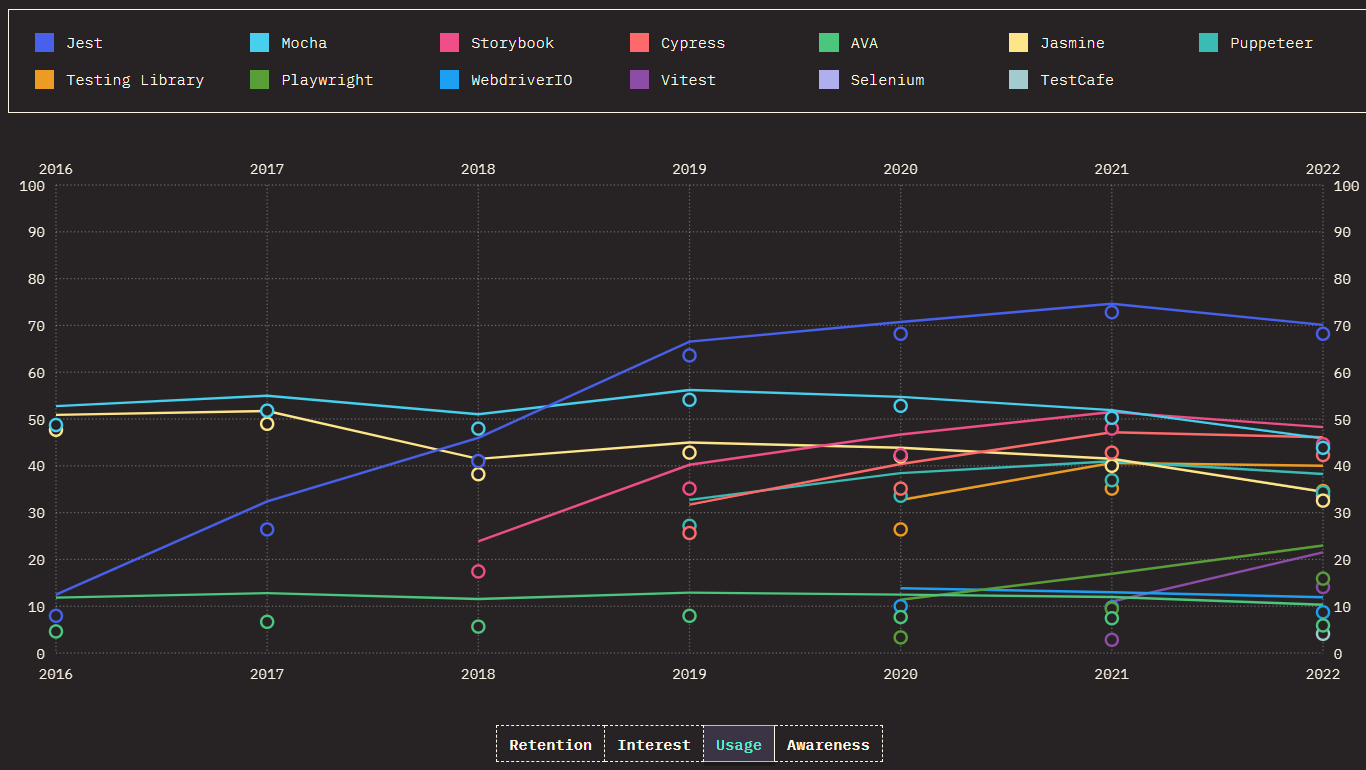
4. The State of JavaScript — Mobile and Desktop
Electron and React Native are the most used, each accounting for about 35%. As in other areas, emerging technology Tauri continues to have the highest retention rate; it’s a relatively new open source toolkit for building cross-platform desktop applications using web technologies such as HTML, CSS, and JavaScript. Tauri released version 1.0 in July, its core library is written in Rust, and the project focuses on improving security and reducing resource usage. The Tauri application has a Rust binary that manages windows, webviews, and calls to the operating system.Compared to the better known Electron, Tauri is smaller, faster, and growing in popularity.
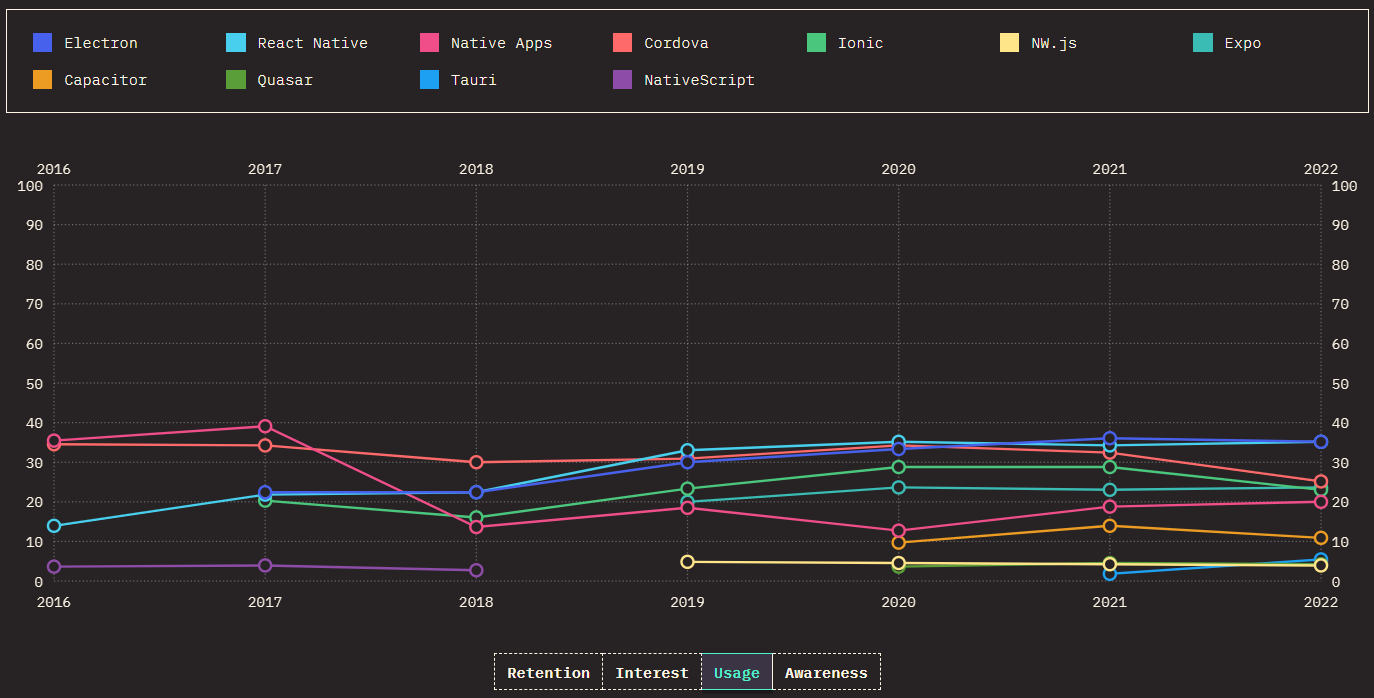
5. The State of JavaScript – Build Tools
In the 2021 report, Vite not only made its debut with a satisfaction rate of 98%, but also achieved a usage rate of 30% in the first year. 2022’s Vite is still performing well, with a retention rate of 98.4%, an interest rate of 81.7%, and a usage rate of about 50%. Webpack still leads with 84.8% adoption, but Vite wins the “Most Adopted Technology” survey, with scores rising year over year.
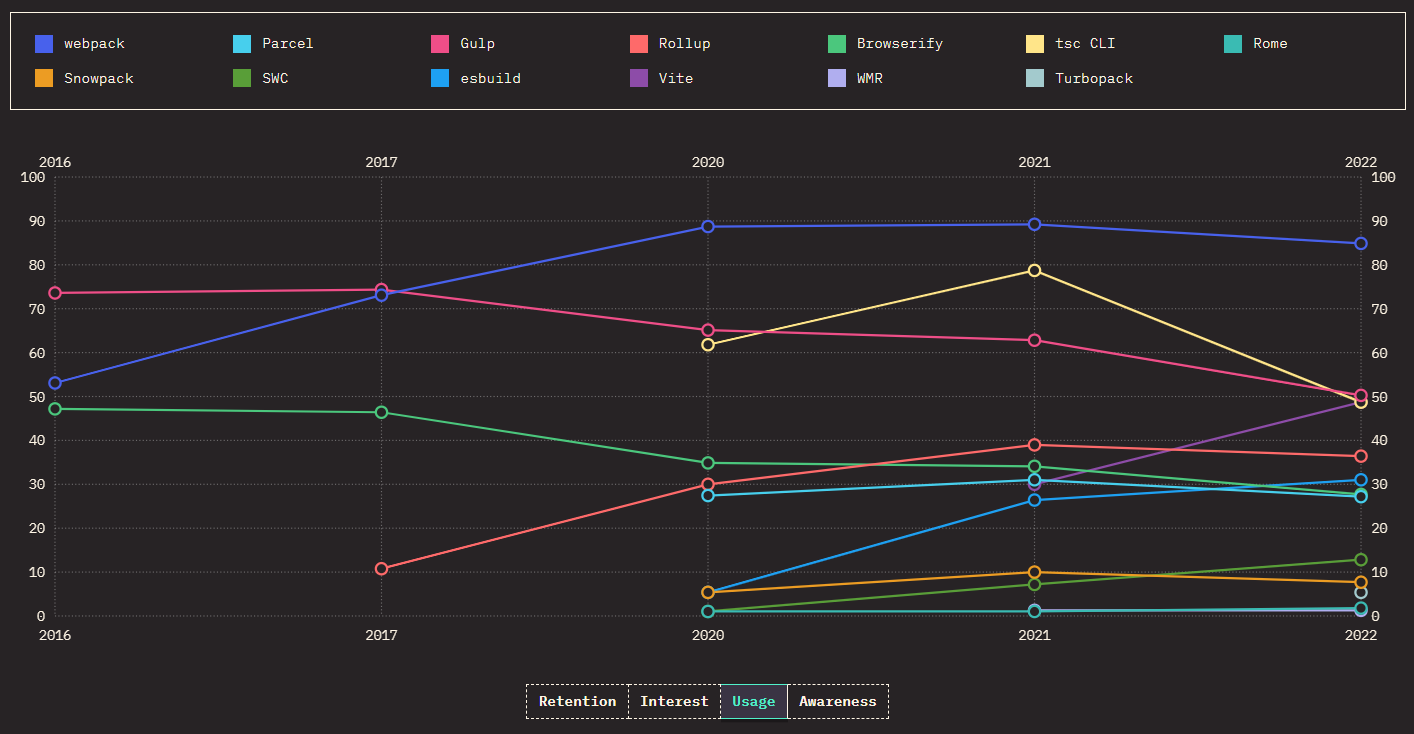
6. JavaScript status – Monorepo tools
The survey also presents data on monorepo tools. Among them, pnpm, Turborepo, and Nx had the highest retention rates, while Rush and Lerna had the lowest. Respondents showed the strongest interest in Turborepo, pnpm, and Nx; however, usage was largely the opposite, with Yarn Workspaces leading the way at 26.3%.
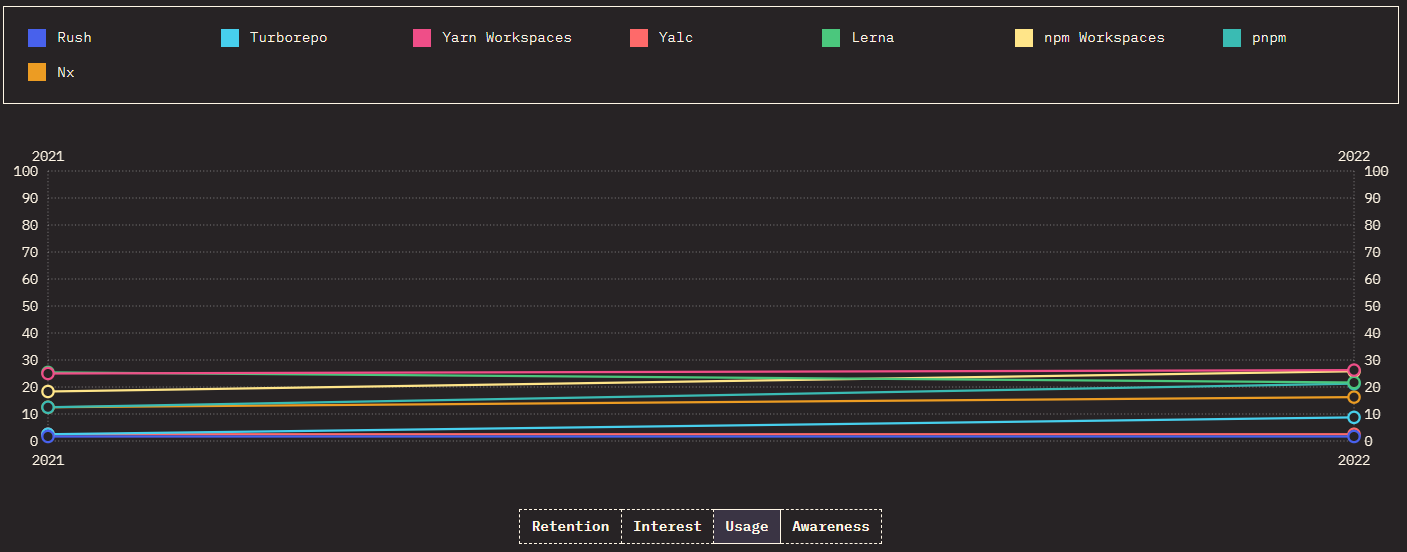
also,In response to questions about JavaScript flavors 27,000 98.9% of people of people said they use TypeScript. The second place is Elm with only 2.3%. Regarding the JavaScript/TypeScript balance, 20.7% of respondents said they only coded in TypeScript, compared to 8.2% who only used JavaScript.
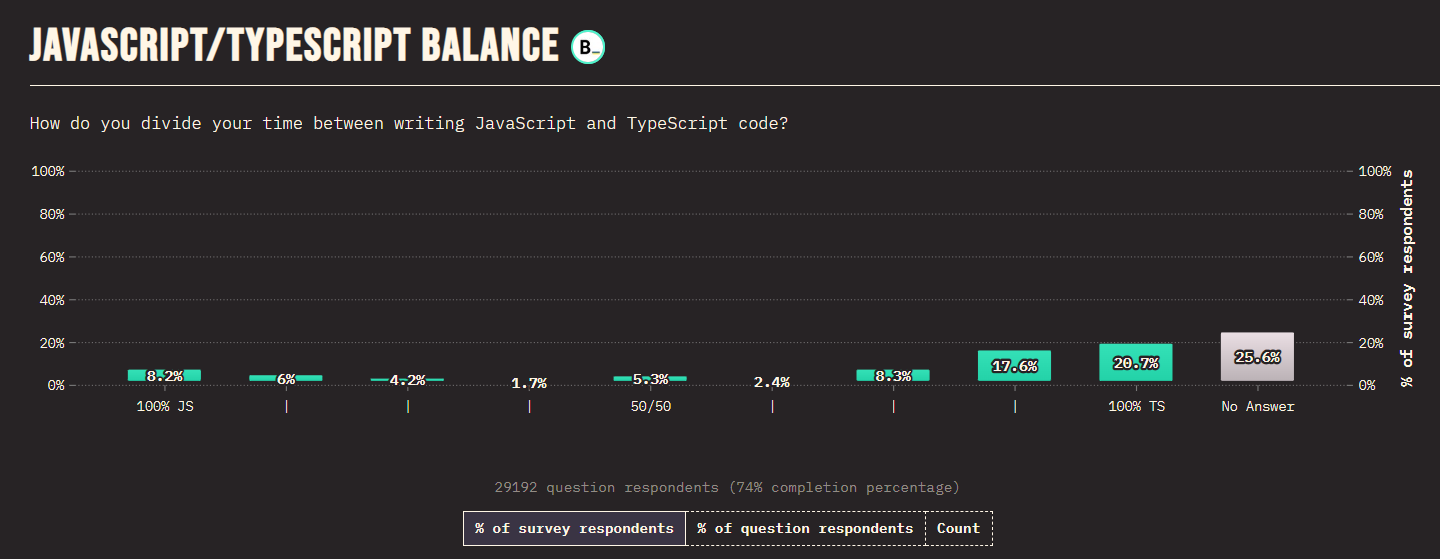
The most used non-JavaScript language by respondents was Python, followed by PHP, Java, Rust, Go, C#, and C/C++.
full reportAvailable:The State of Javascript 2022
#JavaScript #survey #TypeScript #continues #dominate #Vite #Tauri #popular #News Fast Delivery
